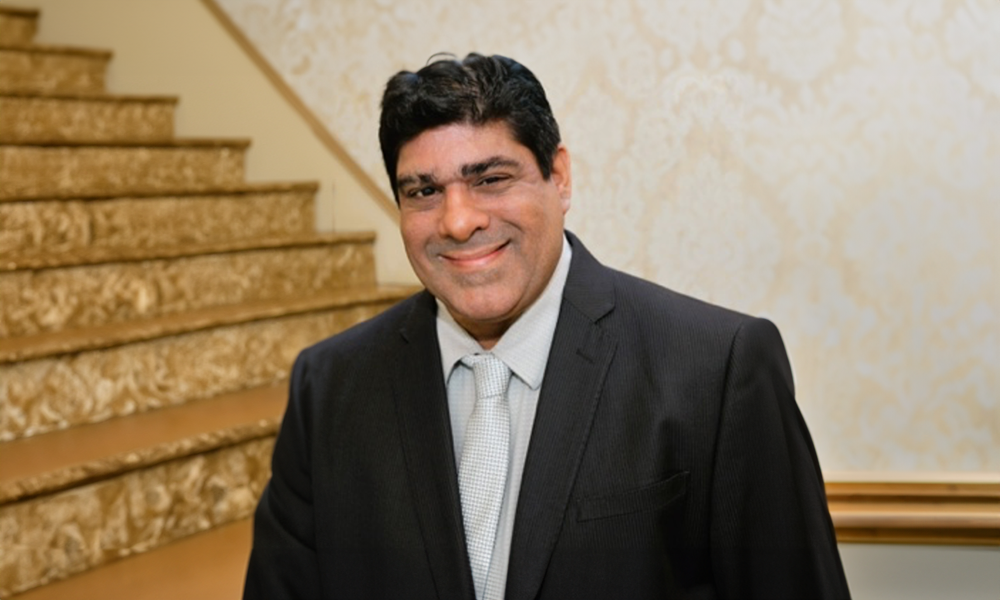Sixty-one percent of likely voters say they support legalizing marijuana for use by adults ages 21 and older, while 34 percent say they oppose the plan and four percent are undecided, according to the latest survey from the Western New England University Polling Institute.
The telephone survey of 417 likely voters, conducted October 23 through November 2, found that support for marijuana legalization has risen by nine points over the past month, while opposition has dropped by eight points. Likely voters favored legalization by a margin of 52 percent to 42 percent in a Polling Institute survey conducted September 24 through October 3.
Marijuana legalization is one of four statewide ballot questions that voters will consider on Tuesday. The Polling Institute also found in its latest survey that: 52 percent of likely voters said they oppose lifting the cap on charter schools in Massachusetts, while 39 percent support the proposal and eight percent are undecided.
65 percent of likely voters said they support a proposed ban on the confinement of hens, calves and pigs in ways that prevent them from lying down, standing up, fully extending their limits or turning around freely. Twenty-five percent of likely voters oppose the restrictions, and nine percent are undecided.
n 50 percent of likely voters oppose allowing the state to license a second slots parlor in Massachusetts, while 32 percent said they support the plan and 17 percent said they are undecided.
Tim Vercellotti, director of the Polling Institute and a professor of political science at Western New England University, said the large percentage of voters who said they were undecided about licensing a second slots parlor in the state was unusual so close to Election Day.
“Our interviewers reported many instances in which survey respondents simply did not understand the term ‘slots parlor’ in the question,” Vercellotti said. “The ballot that voters will view on Tuesday has a lengthy explanation of the term, and the actual results of the ballot question could be very different from what we are seeing in our survey.”
In the race for the presidency, the Polling Institute found that Democrat Hillary Clinton is maintaining a sizable lead over Republican Donald Trump, 56 percent to 26 percent, with eight percent of likely voters saying they support Libertarian Gary Johnson and 3 percent backing Jill Stein, the Green-Rainbow Party nominee. The results reflected little change from the last Polling Institute survey conducted September 24 through October 3., in which Clinton led Trump by a margin of 58 percent to 26 percent among likely voters.
With little suspense in the presidential race in Massachusetts, the ballot questions have occupied much of the political spotlight in the state this fall. The 2016 election marks the third consecutive presidential election cycle in which Massachusetts voters have considered a ballot question pertaining to marijuana. Voters approved the use of marijuana for medical purposes by a margin of 63 percent to 37 percent in 2012. Voters also approved a proposal to decriminalize possession of an ounce or less of marijuana by a margin of 65 percent to 35 percent in 2008, according to the Elections Division in the office of the Massachusetts Secretary of the Commonwealth.
The Polling Institute survey found that support for legalizing marijuana for use by all adults was highest among Democrats (70 percent) and unenrolled voters (58 percent). A majority of Republican voters – 59 percent – oppose the idea. Support also varied widely by age, with 81 percent of likely voters ages 18 to 39 backing legalization. The same was true of 56 percent of voters ages 40 to 54 and 62 percent of voters ages 55 to 64, while 52 percent of likely voters age 65 and over said they oppose the idea. Support also varied slightly by gender, with 65 percent of men and 57 percent of women saying they back legalization.
Although opponents of marijuana legalization have targeted some of their arguments toward parents, the survey found that 63 percent of likely voters who have children under the age of 18 support legalization, while 60 percent of voters who do not have minor children also back legalization.
On lifting the cap on charter schools, an increasing percentage of likely voters said they are paying attention to the debate over the issue. Nearly 80 percent of likely voters said they were following the discussion very closely or somewhat closely, compared to 63 percent in the Polling Institute survey conducted September 24 through October 3.
Charter schools are independent public schools that operate under charters granted by the state, and are funded with tax dollars. Such schools can develop their own curriculum and hire and fire teachers and staff, but must show good results within five years or risk losing their charter, according to the state Department of Elementary and Secondary Education.
The state has limited the number of charters that it will issue, and supporters of charter schools are seeking to raise the cap. Proponents say that charter schools can provide an alternative for students whose local public schools are under-performing, while opponents say that charter schools take away tax dollars from other public schools.
Support for lifting the cap increased slightly in the latest survey. Thirty-nine percent of likely voters said they would support lifting the cap, up from 34 percent in the September 24 - October 3.survey. Opposition also increased by five points, from 47 percent to 52 percent.
Public opinion fell along traditional party lines, with 60 percent of Democratic likely voters saying they oppose lifting the cap, and 62 percent of Republicans saying they support lifting the cap. Forty-nine percent of unenrolled likely voters said they oppose lifting the cap, while 38 percent of unenrolled voters said they support the plan.
Views on lifting the charter school cap also varied by gender and age. Women were more likely to oppose lifting the cap than men, by a margin of 56 percent to 48 percent. Support for lifting the cap increased with age. Only 21 percent of likely voters ages 18 to 39 back raising the cap, while 52 percent of likely voters ages 55 to 64 and 53 percent of likely voters ages 65 and older support the proposal.
Voter sentiment on charter schools varied by race and household income levels in previous Polling Institute surveys, with non-white voters and low-income voters more likely to favor lifting the cap. But those differences did not emerge in the latest poll. Among non-white likely voters, comprised primarily of African-American and Latino respondents, 50 percent opposed lifting the cap and 38 percent were in favor. Among white likely voters, 52 percent opposed lifting the cap and 39 percent were in favor. Fifty-nine percent of likely voters in the lowest household income category – under $35,000 per year – said they oppose raising the cap, compared to 52 percent of likely voters in the highest category, household incomes of $100,000 per year or more.
Opinions varied by region, with 58 percent of likely voters in western and central Massachusetts saying they oppose lifting the cap, compared to 46 percent of likely voters on the North and South Shores and 51 percent in Boston and surrounding suburbs.
In the presidential contest, the Polling Institute found that support for the candidates in the latest survey has changed very little since the previous survey in late September and early October. Clinton has a 30-point lead over Trump in the latest survey, compared to a 32-point lead among likely voters in the previous survey.
“Despite all of the twists and turns in the presidential campaign nationally, voters’ views in Massachusetts have been pretty stable from one survey to the next,” Vercellotti said.
Democratic presidential nominees have carried Massachusetts by margins of 23 to 26 percentage points in each cycle since 2000. Vercellotti noted that one would have to go back to 1996, when Bill Clinton won the state by 33 points, to find a lead similar to that which Hillary Clinton holds among likely voters in the latest survey.
The latest survey results did, however, capture some of the unique dynamics of the 2016 presidential campaign. Among Democratic likely voters, 85 percent said they would support Clinton and only five percent said they would support Trump. Among Republican voters, 68 percent said they would back Trump and 13 percent said they would vote for Clinton. Seventeen percent of Republican likely voters said they would support Libertarian nominee Gary Johnson, whose vice-presidential running mate is former Massachusetts governor William Weld.
“Although Donald Trump easily won the Republican primary in Massachusetts in the spring, this fall his base of support is splintering somewhat with Johnson in the race,” Vercellotti said.
Candidate favorability numbers also showed little change in the latest survey. Fifty percent of likely voters said they have a favorable view of Clinton, while 44 percent hold an unfavorable view, compared to 48 percent favorable and 44 percent unfavorable four weeks ago. Seventy-six percent of likely voters said they hold an unfavorable view of Trump, while 22 percent said they hold a favorable view, compared to 70 percent unfavorable and 25 percent favorable in the September 24 - October 3. survey.
Seventy-one percent of likely voters in Massachusetts said they expect Clinton to win the presidency, up from 64 percent in the previous survey, while 14 percent predicted Trump would win, down from 20 percent in the last survey.
Overall, likely voters were confident that the vote in the presidential election would be counted accurately around the nation, but views on the topic varied significantly by party and the candidate that voters said they would support in the election. Fifty-five percent of likely voters said they were very confident that votes would be counted accurately. Seventy-three percent of Democratic likely voters said they were very confident, but only 32 percent of Republican voters said the same. Seventy-six percent of Clinton supporters said they were very confident, while only 17 percent of Trump supporters said they were very confident.
Looking past the election, more than half of likely voters – 54 percent – said they were very or somewhat confident that the country would unite behind the winner of the presidential election. But partisan differences also emerged in the responses to the question. Sixty-five percent of Democrats said they were very or somewhat confident, compared to 49 percent of Republican likely voters. Sixty-one percent of Clinton supporters said they were very or somewhat confident the country would unite behind the winner, while 53 percent of Trump supporters said the same.
Forty-three percent of likely voters said they were not very confident or not at all confident that the country would unite behind the winner, a sentiment voiced by 33 percent of Democrats and 49 percent of Republicans. One-third of Clinton supporters and 43 percent of Trump supporters said they were not very confident or not at all confident.
“Voters are slightly more confident than not that the country will unite behind the winner, but there is some disagreement depending on your partisanship and the candidate that you support,” Vercellotti said.
To view the complete polling tables click here, or use the follow URL: http://www1.wne.edu/news/2016/11/PollingTables_FINAL_11_04_16.pdf
METHODOLOGY
The Western New England University Polling Institute conducted a telephone survey Oct. 23 – Nov. 2, 2016. Western New England University sponsored and funded the study. The survey sample consists of telephone interviews in English only with 504 adults ages 18 and older drawn from across Massachusetts using random-digit-dialing. The sample yielded 470 adults who said they are registered to vote in Massachusetts, and 417 voters classified as likely to vote in the Nov. 8, 2016 general election. Likely voters were identified in one of two ways. (1) Seventy-three voters who said they had already voted early or by absentee ballot were counted as part of the subsample of likely voters. (2) Individuals who had not yet voted at the time of the phone interview were classified as likely voters based on their responses to questions about interest in the upcoming election, likelihood of voting in the election, participation in the 2012 presidential and 2014 gubernatorial elections, and knowledge of the location and name of their polling place.
Interviewers at the Polling Institute dialed household telephone numbers, known as “landline numbers,” and cell phone numbers using random samples obtained from Survey Sampling International of Shelton, CT. In order to draw a representative sample from the landline numbers, interviewers alternated asking for the youngest adult male or the youngest adult female age 18 or older who was home at the time of the call. Interviewers dialing cell phone numbers interviewed the respondent who answered the cell phone after confirming three things: (1) that the respondent was in a safe setting to complete the survey; (2) that the respondent was an adult age 18 or older; and (3) that the respondent was a resident of Massachusetts. The sample of all adults consisted of 250 interviews completed on landlines and 254 interviews completed on cell phones. The landline and cell phone data were combined and weighted to reflect the adult population of Massachusetts by gender, race, age, and county of residence using U.S. Census estimates for Massachusetts. The data also were weighted to adjust for cell phone and landline usage based on state-level estimates for Massachusetts from the National Center for Health Statistics and to adjust for voter registration by party using figures from the office of the Massachusetts Secretary of the Commonwealth. Complete results of the poll and the full text of the landline and cell phone versions of the survey are available at http://www1.wne.edu/polling-institute/index.cfm.
All surveys are subject to sampling error, which is the expected probable difference between interviewing everyone in a population versus a scientific sampling drawn from that population. The margin of sampling error for a sample of 470 registered voters is +/- 4.5 percent at a 95 percent confidence interval, and the margin of sampling error for a sample of 417 likely voters is +/- 5 percent at a 95 percent confidence interval. Thus if 55 percent of likely voters said they support Hillary Clinton for president, one would be 95 percent sure that the true figure would be between 50 percent and 60 percent (55 percent +/- 5 percent) had all likely voters in Massachusetts been interviewed, rather than just a sample. Sampling error increases as the sample size decreases, so statements based on various population subgroups are subject to more error than are statements based on the total sample. Sampling error does not take into account other sources of variation inherent in public opinion studies, such as non-response, question wording, or context effects.
Established in 2005, the Western New England University Polling Institute conducts research on issues of importance to Massachusetts and the region. The Institute provides the University’s faculty and students with opportunities to participate in public opinion research. The Institute is a charter member of the Transparency Initiative, sponsored by the American Association for Public Opinion Research. The Transparency Initiative supports greater openness in the reporting of survey research methodology. Additional information about the Polling Institute is available from Dr. Tim Vercellotti, director of the Polling Institute, at polling@wne.edu.
To view the complete polling tables click here.





